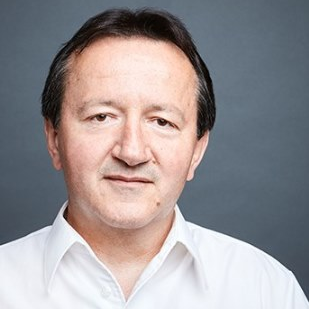Neuromechanical Principles of Perturbed and Unperturbed Motion Control
A special issue of Sensors (ISSN 1424-8220). This special issue belongs to the section "Biosensors".
Deadline for manuscript submissions: 30 June 2024 | Viewed by 9633
Special Issue Editors
Interests: muscle–tendon interaction; neuromuscular control; locomotor adaptability; muscle–tendon adaptation
Interests: muscle–tendon mechanics and interaction; muscle and tendon plasticity; neuromotor control of unperturbed and perturbed locomotion
Special Issues, Collections and Topics in MDPI journals
Special Issue Information
Dear Colleagues,
Real-world environments rarely allow for stable and constant movement, and most often, unsteadiness and unpredictable disturbances are involved. Nevertheless, humans and other vertebrates compensate for unsteady motion and perturbations remarkably well. Furthermore, wearable assistive devices have the potential to improve locomotor performance and enhance daily-life quality and mobility. However, there is a lack of knowledge regarding how biological systems cope with variable environments to maintain robust motion and how they interact with assistive devices when improving functional performance. Through an integration of analytical, computational, and experimental approaches, the various neuromechanical networks and mechanisms (e.g., proprioceptive feedback, sensorimotor integration, muscle-tendon interaction, reflexes, preflexes) that are involved in the control of movement can be explored. Promoting research in this field will improve our understanding of how vertebrate systems organize their movements and how wearable assistive devices may augment and assist human motion in both steady and unsteady conditions.
This Special Issue invites authors to contribute new knowledge about movement control in steady and unsteady conditions. A broad range of related topics is welcome, such as methodological innovations for the analysis of movements, assistive exoskeleton technology, or modeling and experimental studies investigating mechanisms of motor control and muscle–tendon mechanics.
Prof. Dr. Adamantios Arampatzis
Dr. Sebastian Bohm
Guest Editors
Manuscript Submission Information
Manuscripts should be submitted online at www.mdpi.com by registering and logging in to this website. Once you are registered, click here to go to the submission form. Manuscripts can be submitted until the deadline. All submissions that pass pre-check are peer-reviewed. Accepted papers will be published continuously in the journal (as soon as accepted) and will be listed together on the special issue website. Research articles, review articles as well as short communications are invited. For planned papers, a title and short abstract (about 100 words) can be sent to the Editorial Office for announcement on this website.
Submitted manuscripts should not have been published previously, nor be under consideration for publication elsewhere (except conference proceedings papers). All manuscripts are thoroughly refereed through a single-blind peer-review process. A guide for authors and other relevant information for submission of manuscripts is available on the Instructions for Authors page. Sensors is an international peer-reviewed open access semimonthly journal published by MDPI.
Please visit the Instructions for Authors page before submitting a manuscript. The Article Processing Charge (APC) for publication in this open access journal is 2600 CHF (Swiss Francs). Submitted papers should be well formatted and use good English. Authors may use MDPI's English editing service prior to publication or during author revisions.
Keywords
- Neuromotor control
- Muscle force–length–velocity dynamics
- Tendon elasticity
- Exoskeleton
- Modular organization
- Perturbations and disturbances
- Robustness of motion
- Dynamic stability







